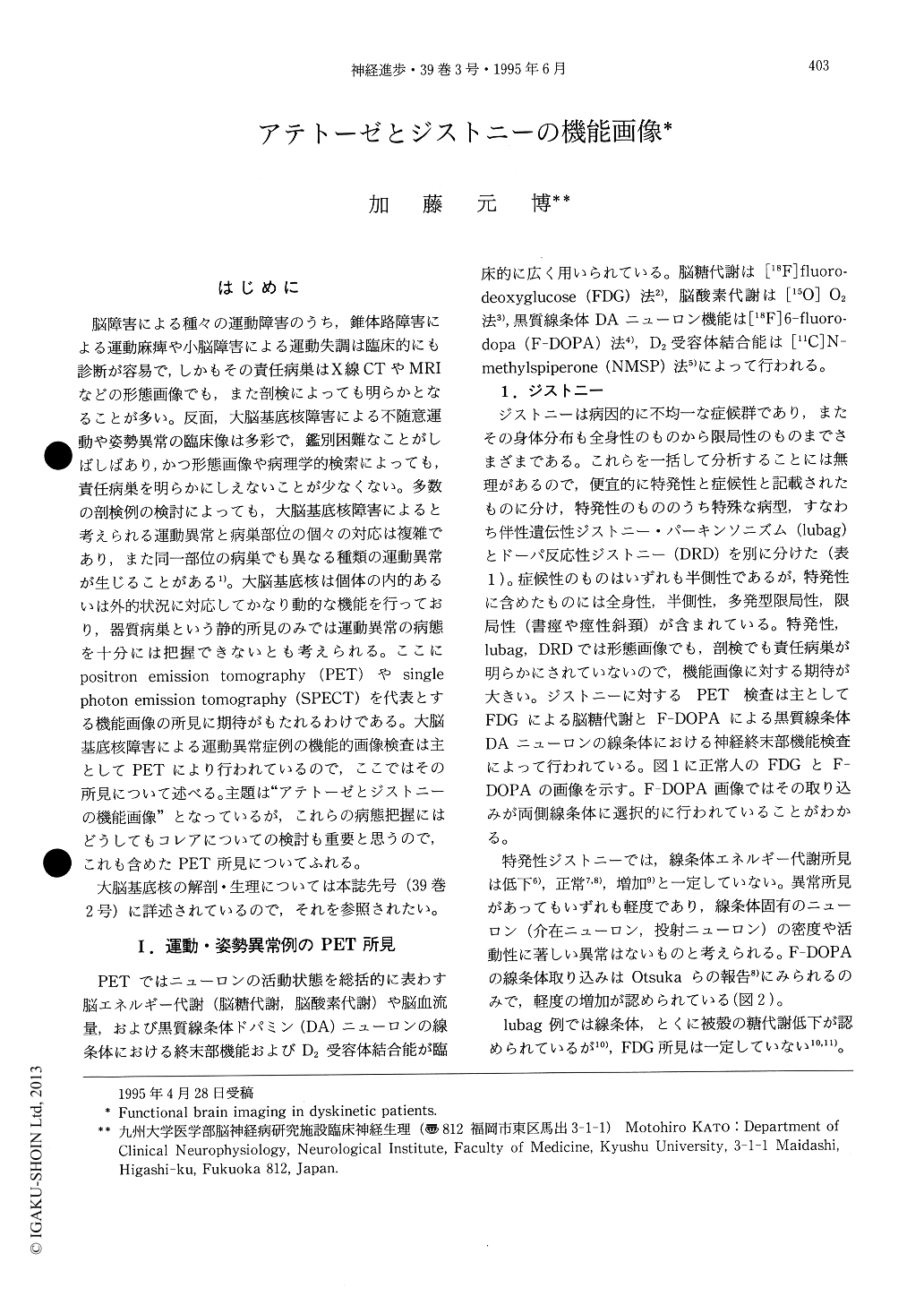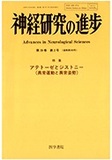Japanese
English
- 有料閲覧
- Abstract 文献概要
- 1ページ目 Look Inside
はじめに
脳障害による種々の運動障害のうち,錐体路障害による運動麻痺や小脳障害による運動失調は臨床的にも診断が容易で,しかもその責任病巣はX線CTやMRIなどの形態画像でも,また剖検によっても明らかとなることが多い。反面,大脳基底核障害による不随意運動や姿勢異常の臨床像は多彩で,鑑別困難なことがしばしばあり,かつ形態画像や病理学的検索によっても,責任病巣を明らかにしえないことが少なくない。多数の剖検例の検討によっても,大脳基底核障害によると考えられる運動異常と病巣部位の個々の対応は複雑であり,また同一部位の病巣でも異なる種類の運動異常が生じることがある1)。大脳基底核は個体の内的あるいは外的状況に対応してかなり動的な機能を行っており,器質病巣という静的所見のみでは運動異常の病態を十分には把握できないとも考えられる。
The physiological mechanisms of dystonia, chorea and athetosis have not been fully understood even with anatomical brain imagings or with pathological verifications. Since the basal ganglia have the complex and dynamic motor functions, and lesions of similar size and location in this structure may show variety of clinical manifestations, non-invasive visualization of functional changes in the brain indyskinetic patients may help understand the pathophysiology underlying the diseases manifesting dystonia, athetosis or chorea.

Copyright © 1995, Igaku-Shoin Ltd. All rights reserved.


